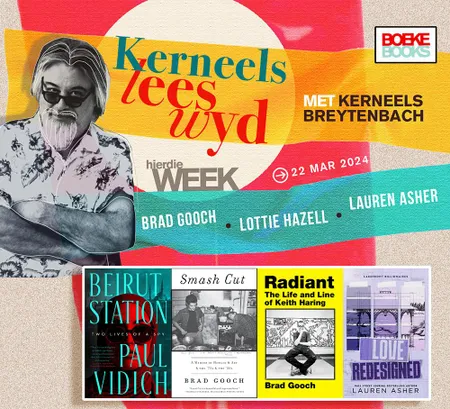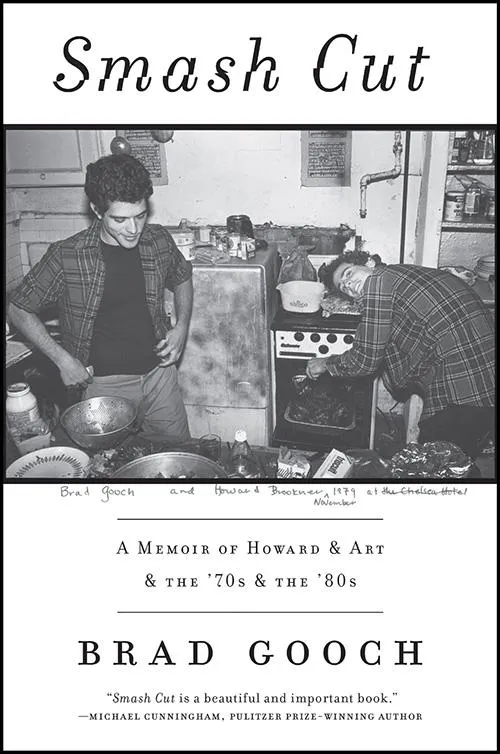IT'S only when you start paying closer attention to an artist who has always been a part of life's visual wallpaper that you see certain things, that you grasp him or her. Koos Prinsloo carried Keith Haring into my life along with the manuscript of Slagplaas. Koos and Haring are both dead now, but I carry Slagplaas and Haring's art with me.
Sex extravaganza
For Prinsloo, who wanted to include a bunch of photos in Slagplaas of Haring's work in public spaces, it was the Radiant Baby's life story that spoke as strongly as his art — Haring died of Aids-related causes in 1990 after a frantic experience of the sexual extravaganza that was New York in the late Seventies and early Eighties. Haring's initiation was straight but his travelling companion, Suzy Maskarinec, later recounted that he realised in her arms that his salvation lay in gay life.
Today, with Brad Gooch's Radiant: The Life and Line of Keith Haring open before me, I'm starting to grasp a further dimension of Prinsloo's involvement with Haring. Prinsloo must have read John Gruen's biography of Haring, but he also knew New York, and he knew that was half the story.
Gooch, who was friends with Haring and saw him in action in the rough and tumble of famous bacchanal sex joints like the Mineshaft, wrote one of the milestone biographies about a modern artist. It's as close to the full story as you can get. Gooch is a poet and writer but this is the publication with which he might win a Pulitzer Prize.
Lees hierdie artikel in Afrikaans:
What fascinates me about Haring is that his career was effectively 12 years long, actually shorter, because the first two years he was still finding his feet, searching for a stylistic stamp of his own. Previously, he was a Jesus freak for a while and poured in the remnants in his “Radiant Baby" tag — a little baby with a halo that he used as a visual signature in his artwork. Baby Jesus.
Other things spill out as well. Haring the journal writer, Haring the maker, until his death, of lists on which he plotted his daily expenses. The child of an engineer.
Gooch explains the connection with Christo, Pierre Alechinsky and Andy Warhol. He explores in depth the great paradox of Haring as an artist — someone whose works fetched high prices in galleries and auctions, but who, under the influence of Alechinsky, gave his art away for free via the rarified branches of graffiti. Haring is a tragic figure, and one cannot ignore this descending line.
What made me drink in every word is the way in which Gooch captures the time slot. What drugs Haring used (he had a huge appetite), his meddling with performance art in Club 57 and the way his life as an artist was really just part of a larger sexual mosaic. Haring's hunger for sex is awe-inspiring — an extroverted exhibitionist, the surfer of the sweat baths. The overwhelming shadows of someone who was essentially an introvert.
A monument of a book.
Radiant: The Life and Line of Keith Haring by Brad Gooch was published by HarperCollins and costs $32.49 at Amazon.
Avant-garde
The Keith Haring biography turned my attention to the biographer, Brad Gooch. He has published authoritative works on Frank O'Hara and Flannery O'Connor, and is a professor of English literature at William Paterson University in New Jersey. He survived the Eighties but his partner, film director Howard Brookner, was a victim of Aids. In this book, he describes how Keith Haring attended Brookner's funeral with dead eyes. This book isn't as monumental as Radiant, but it isn't trying to be much more than an account of Gooch and Brookner's relationship. In doing so, it also becomes an account of the development of the avant-garde in the arts in New York in the Eighties. All the clubs, all the gossip — but also the end of The Golden Age of Promiscuity (the title of one of Gooch's other publications) due to the Aids crisis. (Obtainable from Amazon.)
Smash Cut by Brad Gooch was published by Harper Perennial and costs $14.99 at Amazon.
Oresteia
Although this novel is set in Lebanon in 2006 (when Israel was fighting Hezbollah), the current situation some distance further south in Gaza makes one feel involuntarily that 2006 was a time of relative innocence and simplicity. Vidich is a spy specialist, not quite in the class of Le Carré, Joseph Kanon, Mick Herron or Alan Furst, but quickly on his way to joining them. What counts in his favour is that he is not, like Daniel Silva, blind to Israel's and Mossad's mistakes. It's important to know as the complicated plot goes its twisty course. Vidich got his idea from classical Greek playwright Aeschylus' Oresteia revenge trilogy. There is one massive twist in this story, and when its implications hit you, you start looking at Gaza with different eyes. Funny how timeless fictional themes present anew as nonfiction.
Beirut Station by Paul Vidich was published by Bedford Square and costs R425 at Exclusive Books.
Modern love story
This is a love story. Which means you feel really good after reading it. I definitely did — a nice modern story where the exotic, romantic settings of the love stories I read in school in the Sixties were replaced by the exotic, romantic setting of an American billionaire's life. And the reverend's daughter, who wants nothing to do with the hero but eventually succumbs to him because she has been lusting after his love all this time, is now an interior decorator. One should read books like this as well. It makes you appreciate your place in life.
Love Redesigned by Lauren Asher was published by Little, Brown and costs R290 at Exclusive Books.
♦ VWB ♦
BE PART OF THE CONVERSATION: Go to the bottom of this page to share your opinion. We look forward to hearing from you.






To comment on this article, register (it's fast and free) or log in.
First read Vrye Weekblad's Comment Policy before commenting.